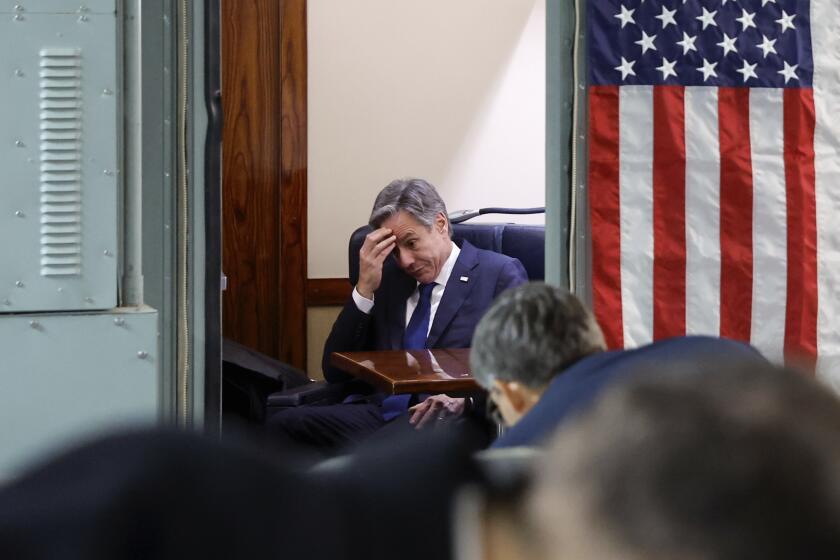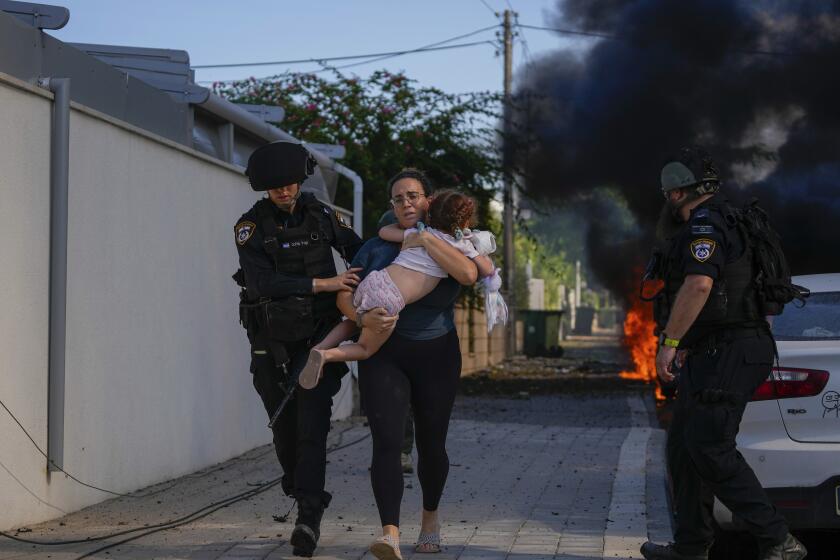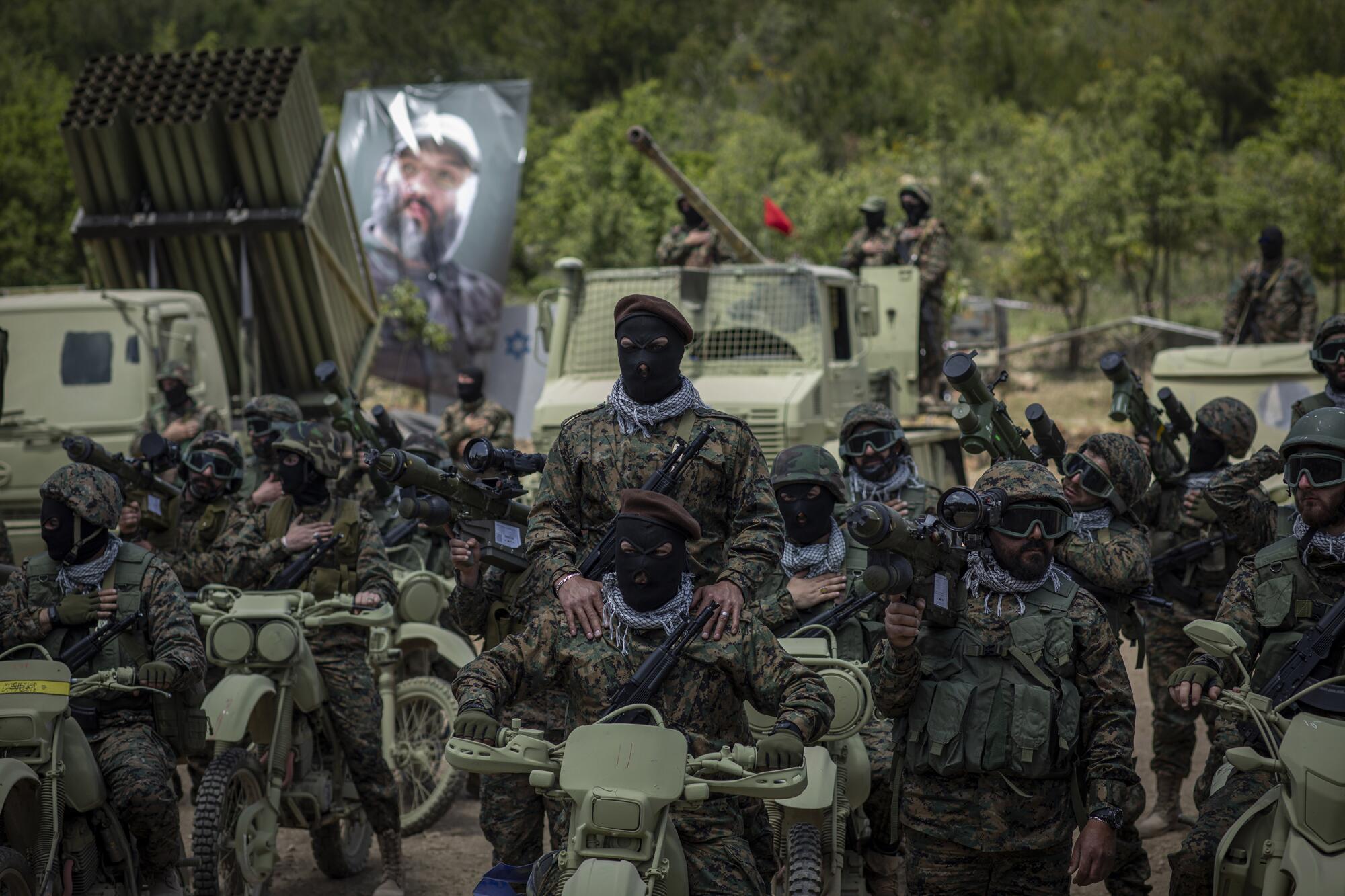
- Share via
BLIDA, Lebanon — Six months ago, the Iran-backed Lebanese militant group and political party Hezbollah staged a rare military exercise for the media to show what it had in store the next time it tussled with Israel. The mood, triumphalist and threatening, was typical for the group, which positions itself as Israel’s nemesis and the standard-bearer of Palestinian resistance.
At a former Hezbollah training ground in the hills of Lebanon’s bucolic south, some 200 balaclava-clad fighters lined up in neat rows near a battery of rocket launchers, antiaircraft guns and all-terrain vehicles. A pair of drones, one bearing the Lebanese flag, the other Hezbollah’s green-on-yellow banner, flew lazy circles above.
To thumping martial music, fighters stormed mockups of Israeli checkpoints and rained rockets on a mountain base. A motorcycle crew commandeered a pickup truck; one commando dispatched a colleague playing an Israeli soldier with a burst of gunfire and a quick shove out the door.
“If you think about expanding your aggression ... you will witness dark days the likes of which you have never seen,” Hashem Safieddine, a senior Hezbollah official, warned Israel at the exercise’s close.

Yet, despite Israel’s relentless military campaign in Gaza and the enclave’s worsening humanitarian nightmare, Hezbollah has unleashed little of its boasted firepower on Israel’s northern flank.
Many in the region and beyond are wondering why — and what might finally spur the group to declare all-out war.
The U.S. should be well-positioned to sway Israel and Arab allies in containing the crushing Gaza war. But the Biden administration’s efforts are falling short.
In the first weeks of the Israel-Hamas conflict, all eyes were on northern Israel — on the opposite end of the country from Hamas’ attack — in expectation of a Hezbollah strike across the Lebanese border. After all, the group is the lodestar of the so-called Axis of Resistance, a constellation of Iran-backed factions that includes Hamas itself and Palestinian Islamic Jihad in Gaza, Houthi rebels in Yemen, Shiite militias in Iraq and pro-government militants in Syria.
In its messaging, Hezbollah often talks about the “unity of battlefields,” where all those forces work together against the U.S. and Israel, with an attack on one calling the others to its aid.
There has been some element of that. In the last month, the Houthis have fired long-range missiles on Israel and U.S. navy ships in the Red Sea. Militias in Iraq and Syria have launched dozens of attacks on U.S. bases, triggering U.S. airstrikes on Iran-affiliated targets in the two countries.
A month after Hamas’ surprise attack nearly brought Israel to its knees, the country’s battered ‘peace camp’ is rising — or trying its best to do so.
Hezbollah fighters, too, have traded fire with Israeli troops along the border and seem primed for a larger role. The group had faced off with Israel before, arguably with more success than any other Arab force, fighting a vicious guerrilla campaign that forced Israel to withdraw from south Lebanon in 2000. Hezbollah weathered a second war in Lebanon, in 2006, and has since expanded both the number of its cadres and its arsenal.
In his first — and much-anticipated — public address since the war between Israel and Hamas erupted, Hezbollah leader Hassan Nasrallah insisted last week that his group has been an active participant from the start, describing Lebanon as a “support front” serving to distract Israeli troops that would otherwise be deployed in Gaza. He said a third of Israel’s army, half its navy, a quarter of its air force and roughly half its missile defenses were aimed at Hezbollah rather than Hamas. It was not possible to verify those figures.
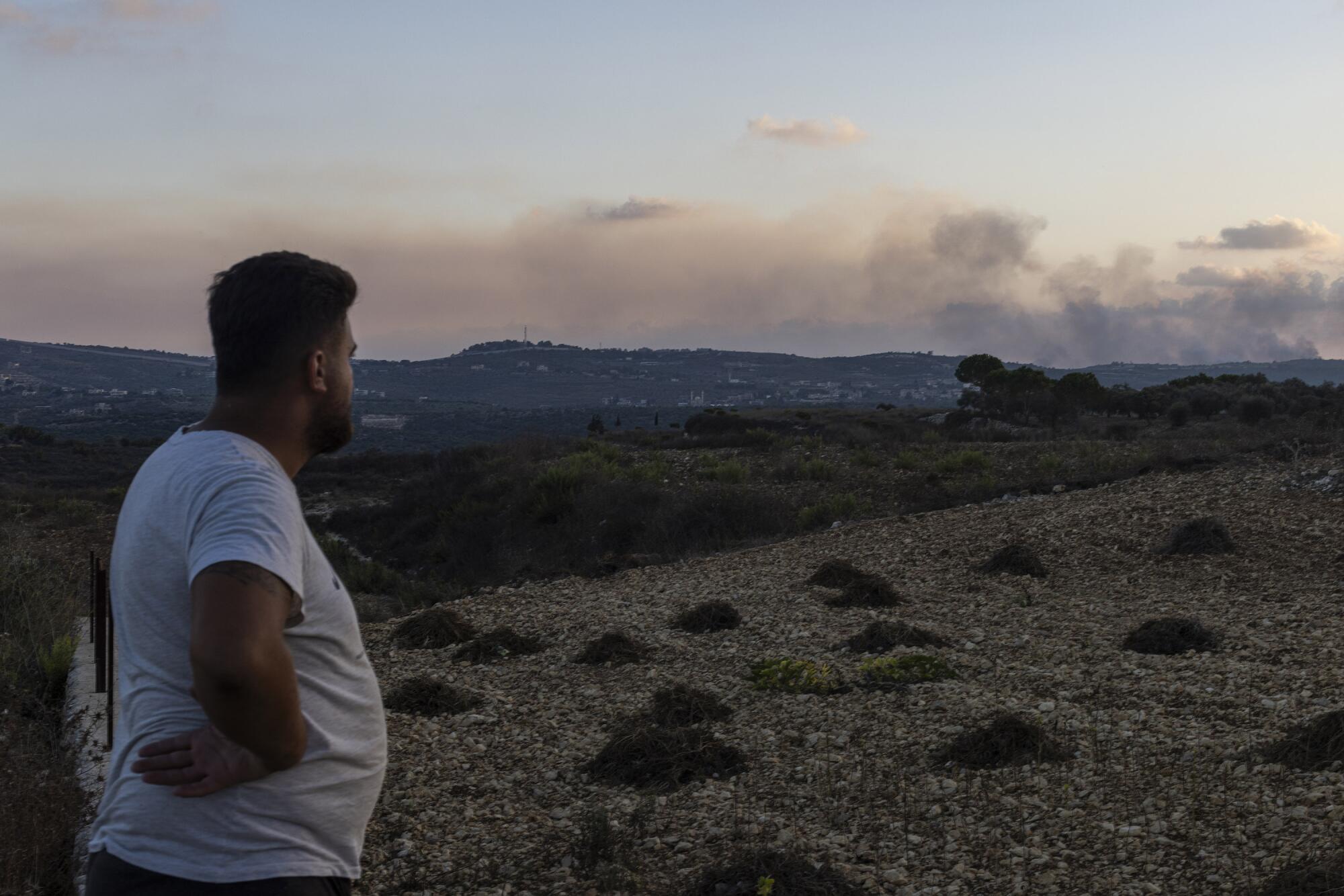
“It is a real battle, different from all the battles the resistance fought in Lebanon,” Nasrallah said. He declared that “all options were on the table” to escalate, and said any attack that killed civilians in Lebanon would push Hezbollah to seek retribution: “A civilian for a civilian.”
But for all the threats, Nasrallah signaled the group would take a relatively cautious approach for now, despite a death toll in Gaza that, according to the Hamas-run Health Ministry, now exceeds 11,000, many times more than the at least 1,200 in Israel who authorities there say were killed in the Oct. 7 attack. Defining victory as frustrating Israel’s designs in Gaza, Nasrallah said what Hezbollah did next would be determined by Hamas’ prospects for survival in the coastal strip and Israel’s behavior toward Lebanon.
What that has meant in practical terms is a sort of halfway war, something between full-on combat and the slow-burn tension always present along the Blue Line, the 75-mile United Nations-mandated line running along Lebanon’s southern frontier with Israel.
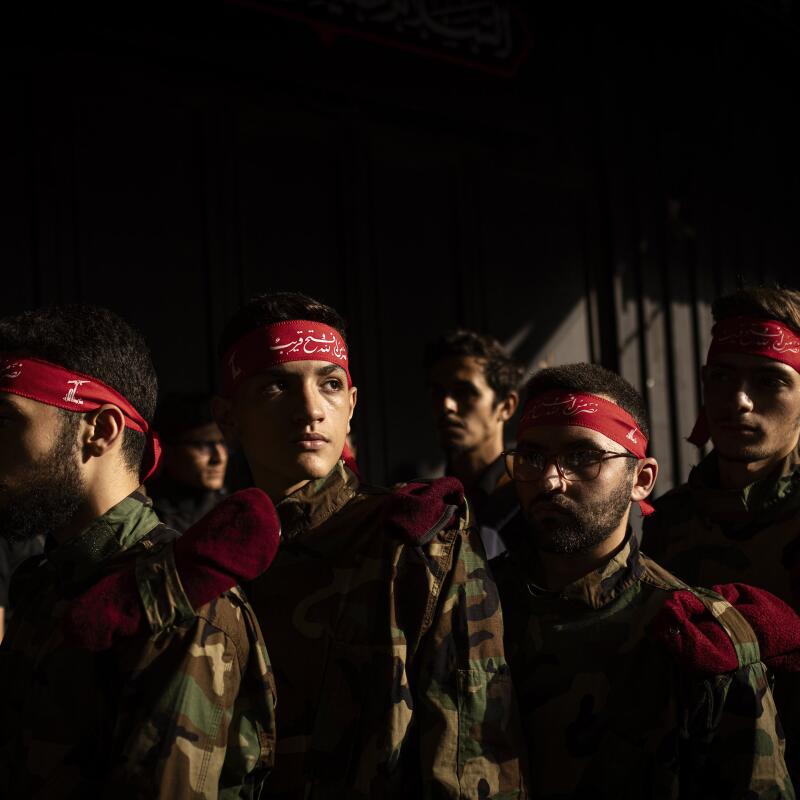
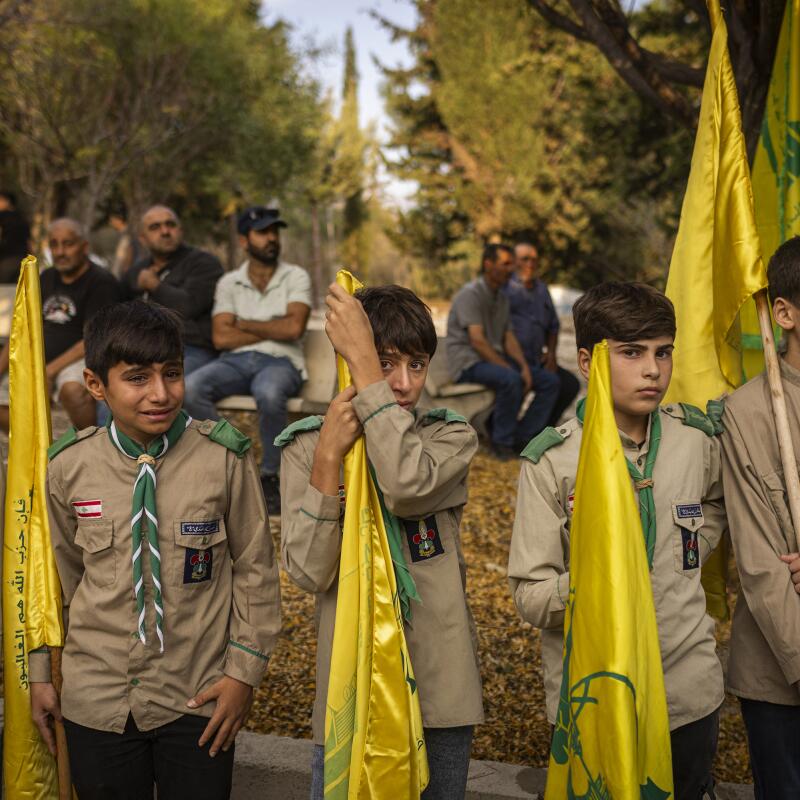
1. Hezbollah supporters at a funeral of a Hezbollah militant killed by Israeli forces. 2. Relatives of Ali Kourani, 16, who was killed by an Israeli drone attack, mourn over his coffin in Yater, southern Lebanon, on Nov. 1. (Diego Ibarra Sanchez / For The Times)
That doesn’t make the destruction any less real: Observers say the group and its allies have fired some 1,200 shells across the border, prompting swift Israeli retaliation that has so far killed at least 63 Hezbollah fighters along with 14 civilians. Some 30,000 Lebanese have had to leave their homes in towns and villages near the Blue Line.
On the other side, more than 40 communities in Israel’s north have been evacuated. Hezbollah claims its operations have killed or wounded some 120 Israeli soldiers; Israeli officials say six soldiers and two civilians have been killed.
Prime Minister Benjamin Netanyahu has warned Hezbollah not to ramp up the fight, saying such an escalation would “exact a price you can’t even imagine.” The U.S., too, in public statements and messages passed through back channels, has repeatedly told Hezbollah and Iran not to take advantage of the Israel-Hamas conflagration, and has dispatched two naval carrier groups to the eastern Mediterranean.
A Times special correspondent in Gaza offers a personal account of living in a place where nowhere feels safe.
For many in Lebanon, Nasrallah’s speech came as a relief for stopping short of declaring all-out war. The trauma of the 2006 war — during which Israel obliterated vast swaths of the south, as well as the Hezbollah-dominated Beirut suburb of Dahieh and vital infrastructure such as roads, bridges, hospitals and factories — is still fresh here. Israeli military planners later dubbed the strategy the Dahieh Doctrine, which treats civilian infrastructure in hostile areas as military targets and calls for disproportionate force against them.
Also, Lebanon today is in an economic free fall, with no patrons to finance any reconstruction efforts.
“The Sayed” — Nasrallah’s religious title — “gives us adrenaline, and we’re ready to fight if we have to,” Mohammad Ali, a long-haired 20-year-old student, said after attending a rally for Nasrallah’s speech in Beirut’s southern suburbs. “But he analyzes everything. There’s Gaza, but he also has people in Lebanon.
“We’re all his children. He takes the danger to us into account.”
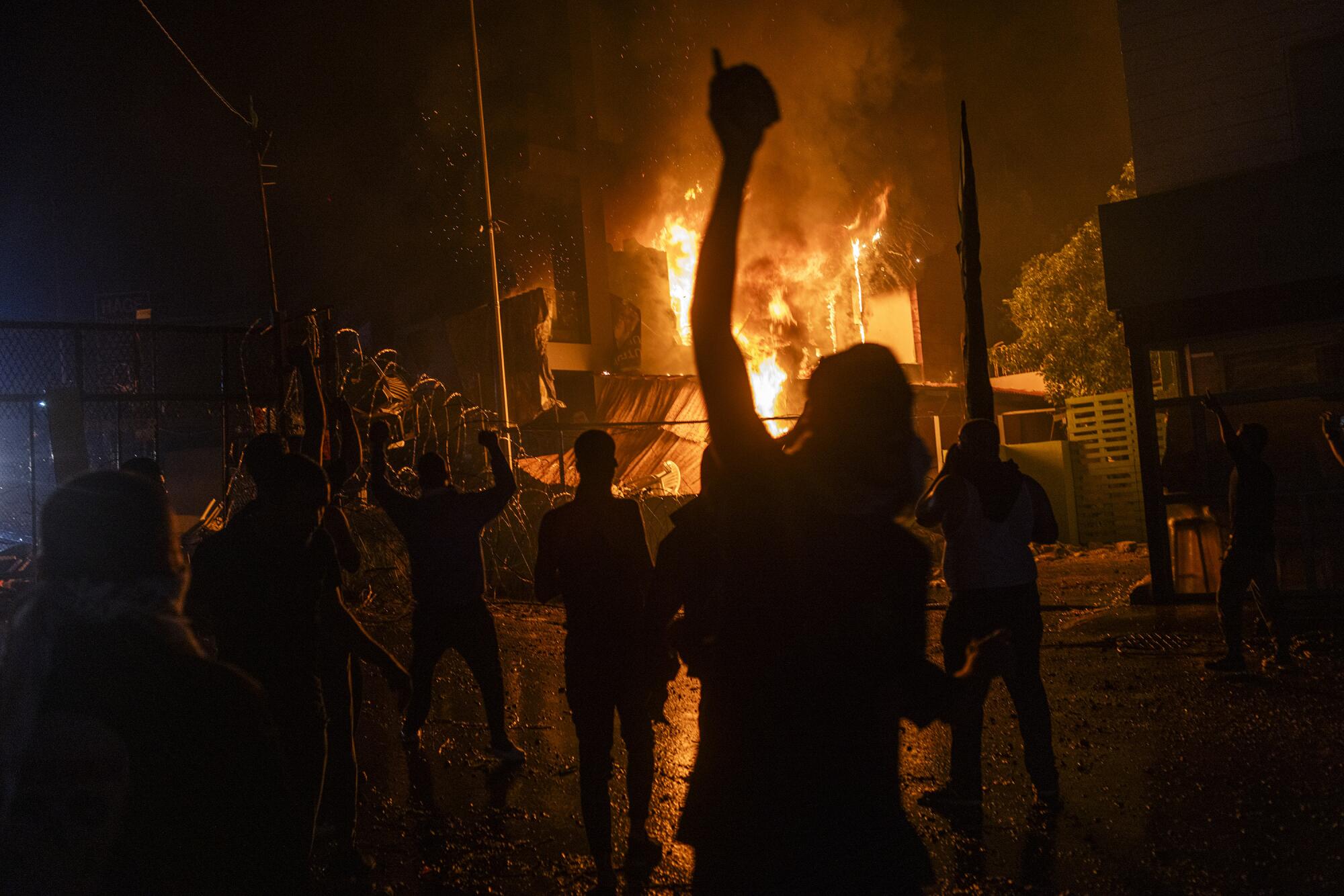
For others in the Arab world, Nasrallah’s speech was a disappointment. In its iconography, speeches and slogans, Hezbollah had made fighting Israel its raison d’etre. Many asked: If not now, then when?
“Did all these millions wait for you to give them a sermon with no real decision?” Palestinian Jordanian writer Khaled Huroob wrote on social media after the speech, adding that the Israelis and Americans were laughing at Nasrallah as they raised a toast with Palestinian blood.
But some analysts say Nasrallah has now laid the groundwork for an escalation if he deems it necessary — if, for example, Gaza is overrun by Israeli forces and Hamas is on the verge of being vanquished, or Israel strikes deeper into Lebanon.
News Alerts
Get breaking news, investigations, analysis and more signature journalism from the Los Angeles Times in your inbox.
You may occasionally receive promotional content from the Los Angeles Times.
“Hezbollah is careful, which is understandable given the 2006 experience, but there’s also a strong understanding within the organization that they’re next, that the Israelis are saying, ‘We won’t wait for Hezbollah to do what Hamas did,’” said Mohanad Hage Ali, a senior fellow at the Carnegie Middle East Center in Beirut.
He added that the red lines Nasrallah set in his speech were intended to “build a Lebanese case for the war rather than the Gaza case for the war.”
In the meantime, the chance of a miscalculation triggering a wider confrontation appears high. On Sunday evening, an Israeli airstrike on a car driving between the south Lebanese towns of Ainata and Aitaroun killed Samira Ayoub and her three granddaughters, aged between 10 and 14. The girls’ mother, Huda Hijazi, who was driving the car, remains in the hospital.
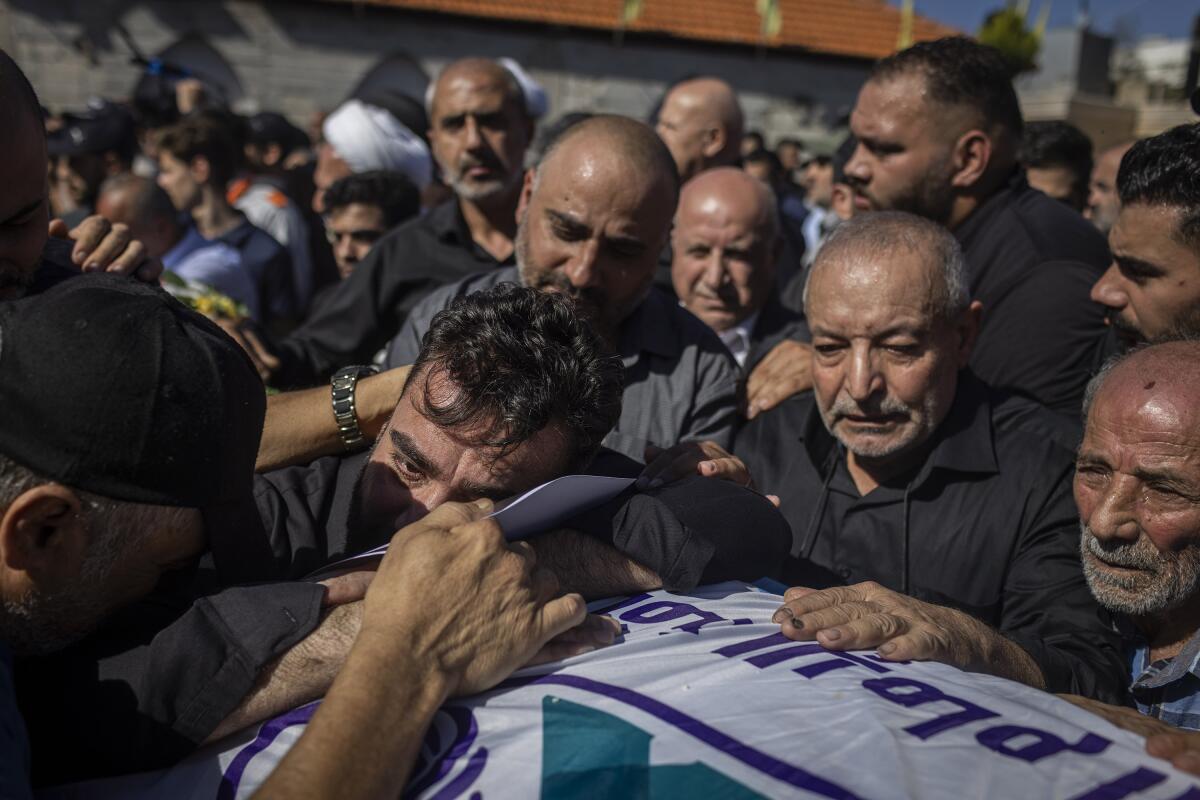
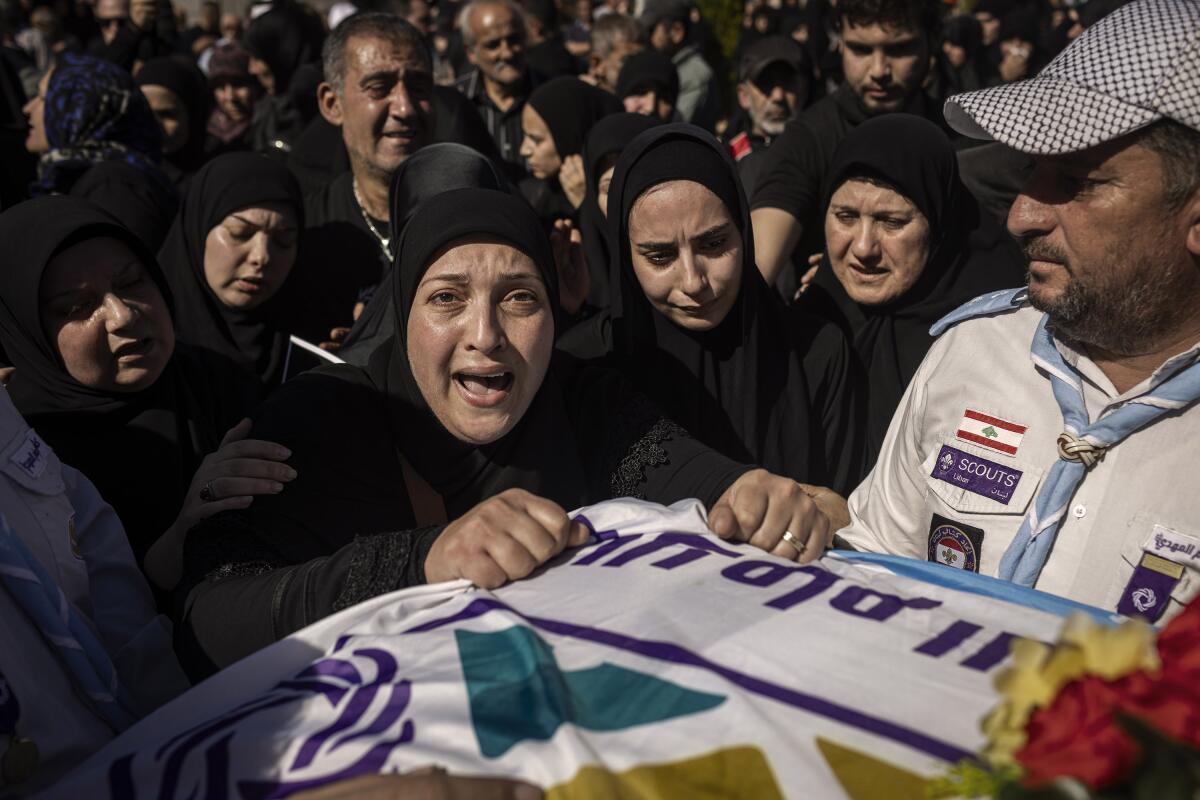
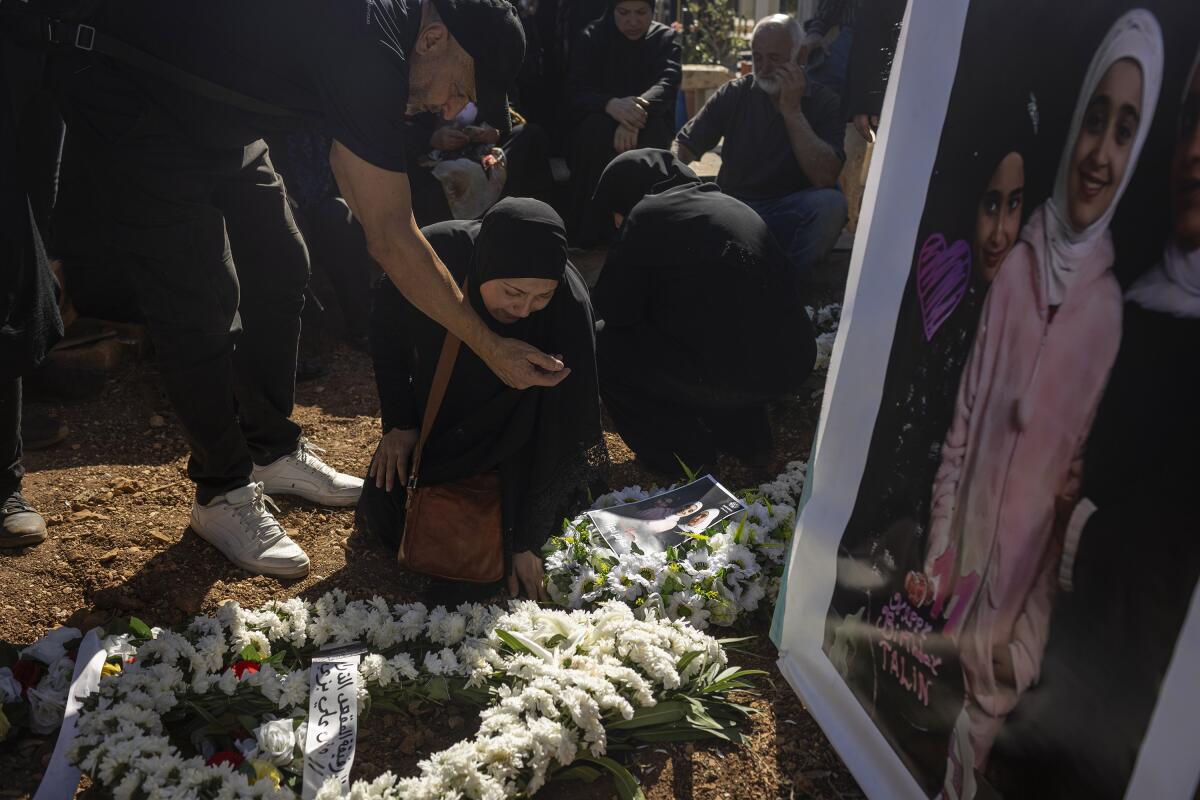
1. Relatives mourn for three girls killed Sunday by an Israeli airstrike in southern Lebanon. (Diego Ibarra Sanchez / For The Times)
In response, Hezbollah launched a salvo of rockets on the northern Israeli town of Kiryat Shmona. The Israeli military said at least one civilian was killed.
The funeral for Ayoub and the three girls took place Tuesday here in Blida, one in a string of border towns defined by allegiance to Hezbollah and its decades-long fight against Israel. The surge in violence has forced most residents with families to leave, said Ali Hussein, the town’s leader, who returned from Germany in 2000 after Israel pulled out of the area.
For now, he added, the equilibrium Hezbollah and Israel had established on the border was holding, but there was no guarantee it would last.
The Ayoub family had initially refused to leave, but on Sunday they had finally decided it was time to go.
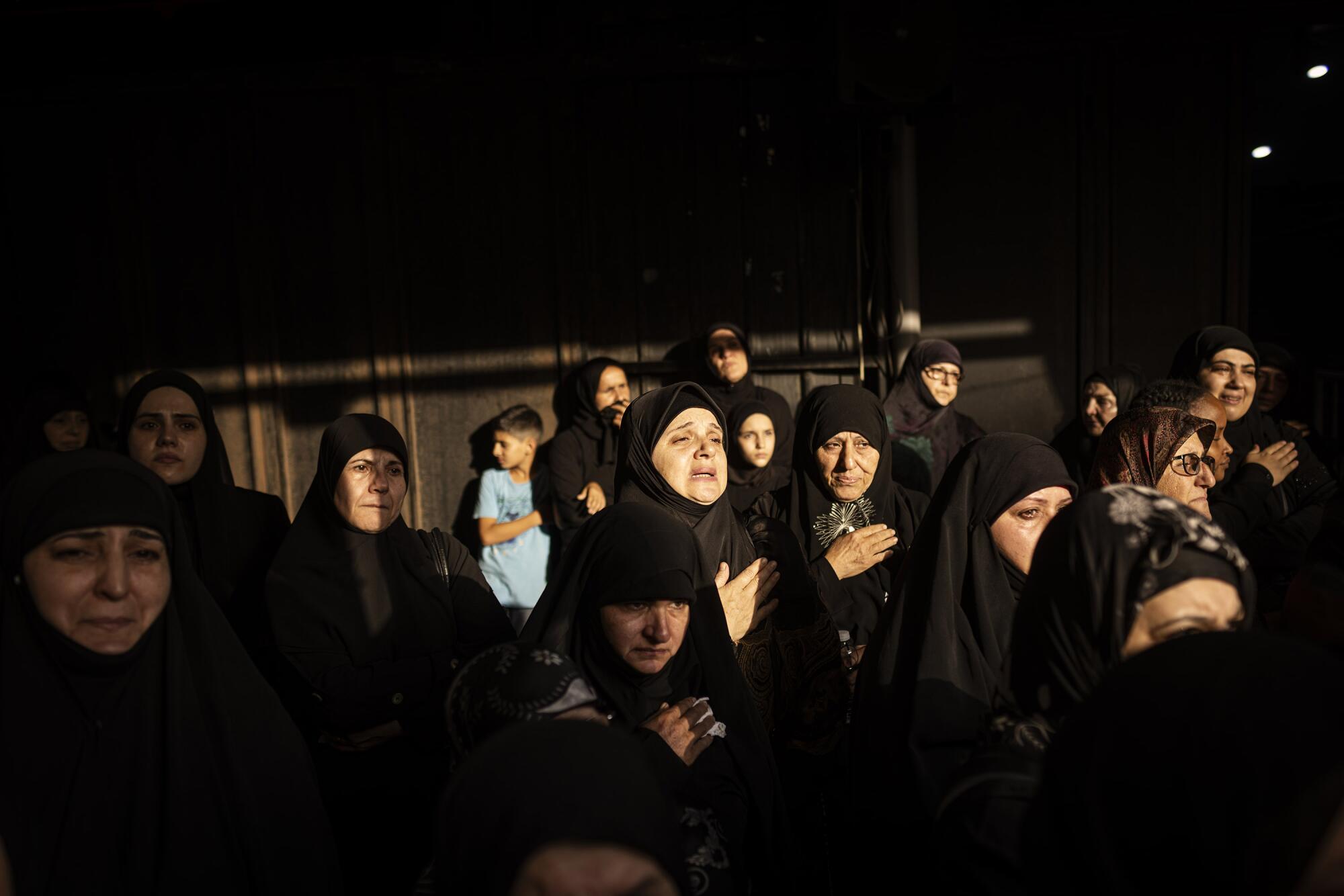
“The girls’ uncle came in another car to escort them out, and told them to play outside before they left so the drones could see them and know the vehicles were civilian,” Hussein said.
Mourners carried the four coffins — wrapped in white for the children, black for the grandmother — through the town.
“Death to America! Death to Israel!” they shouted.
In the cemetery stood a gazebo with posters of fallen Hezbollah fighters, some faded from years of exposure. Less than a mile away, on top of a nearby hill across the border, the radio tower of an Israeli military site loomed. People occasionally glanced up at the sky to catch a glimpse of an Israeli drone buzzing high above.
The U.N. says it is collecting evidence of war crimes by all sides in the Israel-Hamas conflict. But holding perpetrators to account is often difficult.
“We’ve been at this for decades with the Israelis,” said Mohammad Bazzi, a day laborer from Bint Jbeil, a major town that had been one of the hardest hit in 2006. With him were his sons, 6 and 9, dressed in the uniforms of the Mahdi Scouts, Hezbollah’s youth wing.
“I’m 60, and I’ve never felt relaxed here,” he said. Despite that, he has no intention of moving away.
“We’re at war. Why would we leave? We want the Israelis to leave, not us.”
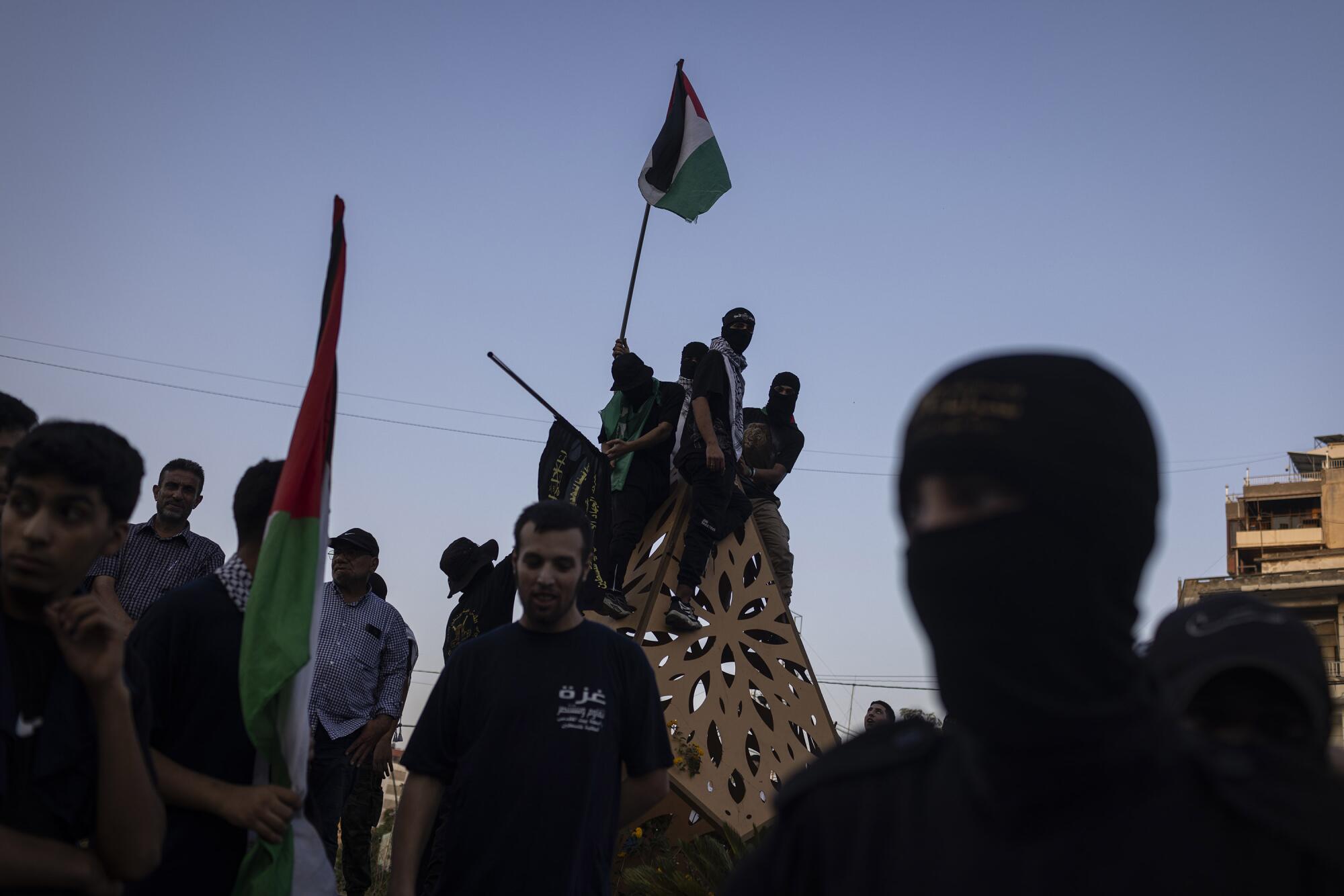
Ahlam Ayoub, the dead girls’ aunt, sat among a group of teary-eyed women, her voice low, almost soothing, as she addressed one of her slain nieces at the graveside in a one-way conversation. “Rimas, where’s your laugh?” she said, as her son gently tugged at her arm, urging her to come away.
Instead, her voice turned hard.
“You think kids are the resistance? You think you’re killing the resistance through targeting these girls?” she said, directing her rage at the Israelis across the border. “We’ll teach them, boys and girls, to take up arms against you.”
Her anger spent, she fell silent. Her son pulled at her arm again. This time she acquiesced, leaning slightly against the young man as he led her away.
More to Read
Sign up for Essential California
The most important California stories and recommendations in your inbox every morning.
You may occasionally receive promotional content from the Los Angeles Times.
